SUMMARY
This is AI generated summarization, which may have errors. For context, always refer to the full article.
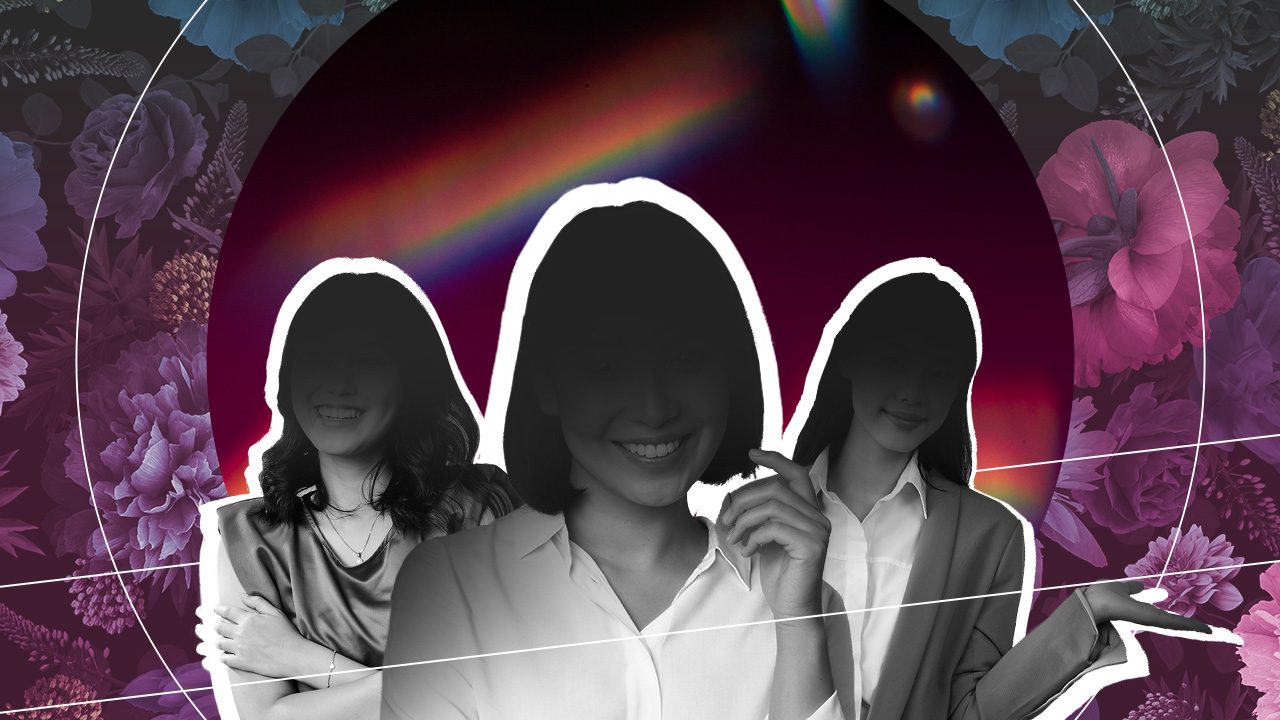
MANILA, Philippines – Without a doubt, mainstream media plays an important role in boosting support and visibility for the LGBTQIA+ community.
Social media has become a stronghold for queer Filipinos to express themselves, share their advocacies, and gain support from others.
While LGBTQIA+ representation has improved in the Philippines, there are other gender and sexual identities that are not represented by the LGBTQIA initialism – identities that could be overlooked and misunderstood in the community.
To celebrate Pride Month, Gen Z adults from the “plus” in the LGBTQIA+ community share their coming out stories along with their parents’ insights about acceptance.

Artem
20 years old
Pronouns: they/he/she
Genderfluid and aroaceflux
Growing up, Artem felt different from others and struggled to understand how people experience attraction and feel the need to have sex.
They identify as genderfluid and aroaceflux. “This means both my sexual and romantic orientation can fluctuate but generally just stay within the A-spectrum,” they explained in an interview with Rappler.
According to the Human Rights Campaign, those who fall in the asexual spectrum may experience no, little, or conditional sexual attraction. In the global population, there are approximately 1% who identify as asexual.
Artem always knew they were queer, but struggled to figure out their identity labels.
“It was less ‘me figuring out I was queer’ and more like ‘I finally found a label that fits me and could explain why I’m different.’ I always sort of knew deep down I was aroace, I just didn’t know what to call it,” they said.
Artem also admitted to struggling with understanding their genderfluidity, but learned to gradually accept it.
“There are days when I like to bind my chest because seeing it hurts me, and there are days when I feel that it looks nice on me. Most of the time I feel like nothing, I just feel like a person or a blob of flesh, no gender; just me,” they shared.
“There are times when I catch myself thinking ‘not a girl’ when someone refers to me as such, but there are also a lot of times when I feel my girlhood.”
Coming out took some time for Artem.
It started on Facebook, then eventually to their close friends and mother. Online communities and resources became their avenue for expressing themselves and helping them understand their identity.
“I did it (coming out) because I wanted more people to know about this identity. I wanted people to respect it…. That it’s real and that we’re real and we are here, we have always been here, and we aren’t going away,” Artem shared.
Initially, Artem’s mom, Faith, grappled with their coming out as she was worried that they would experience bullying and discrimination.
“My initial reaction was that I cried and blamed myself,” she told Rappler. “I left my child for almost 10 years working abroad. I thought one of the reasons of her queerness is because of the emotional struggles she went through while I was away,” she said.
Faith worked in China as a domestic helper since Artem was around three to four years old, leaving them in their aunt’s care. She came back home permanently in 2019.
As she loves her child, Faith came to terms with Artem’s identity. “Acceptance is always the key,” she said.
Faith offered advice to other parents with queer kids: “We don’t own them, our rights end when the rights of our children begin. It is their right to come out as they are because in the real sense, they didn’t choose it.”
Since coming out, Artem says they feel freer and happier.
“Finally, I’m happy because I’m not ashamed to say what I am, and I hope other people find the courage to do the same thing too,” they said.

Rae
23 years old
Pronouns: she/her
Pansexual
During high school, Rae struggled to accept her sexuality because she felt pressured to live up to her parents’ expectations of having her own family in the future.
“I was trying to deny attractions I had over girls, or even butch/stud lesbians. I grew up in a traditional, Catholic household so of course I thought of it as a sin, or something abnormal that I need to address,” she told Rappler.
It was in senior high school when these feelings of attraction became increasingly intense.
“I only found out that my identity is pansexual because I was attracted to gays and lesbians and possibly anyone at all…I found connection with. Their sexual identity didn’t really matter to me. I can be attracted to anyone,” Rae shared.
Pansexuality, as defined by Stonewall, is an attraction to all gender identities or attraction regardless of a person’s gender. Oftentimes, there’s confusion between this identity and bisexuality, which is attraction to multiple gender identities, the operative word being “multiple.”
How did Rae come out?
Rae doesn’t believe in the concept because for her, it means that other people have the power to accept her or not.
“The term for me is sharing. I share to them this colorful life I have for myself because I have the power to welcome them in that life or not,” she said.
Rae’s mom, Anne, admits that she was initially worried about her coming out. But she emphasized, “If my daughter is happy, then I’m happier.”
“My daughter should be strong enough to meet people who might not be able to accept them and it shouldn’t affect how she lives her life too. I continue to support them as normal. Nothing really has changed anyway. My love for her is just the same,” she added.
Anne also advised other parents with LGBTQIA+ children: Be accepting of their identity.
“Let your child be. And I guarantee you, they will become closer to you when they’re assured that you accept them for who they are and whoever they love,” she said.
Since telling her mom, Rae said it feels better knowing that she accepts her. “I even had to ask her twice if it was okay and she said she’s met and loved other people who are like me too so it shouldn’t be different if it’s her own child.”

Nett
21 years old
Pronouns: they/them
Aromantic asexual (mostly aromantic)
“I felt more like a set piece or ‘creature’ than a person.” This was how Nett described their experience after many years of trying to blend in to please others.
Growing up, they’ve always been aware that there’s something different about them, which fueled a feeling of alienation over time.
Nett shared, “When it comes to my aromanticism and asexuality, I had a more difficult time feeling comfortable or ‘myself’ in social situations, even if I taught myself to blend in.”
As Stonewall explained, aromanticism refers to an umbrella term used by individuals who don’t usually experience romantic attraction.
As an aromantic asexual, dealing with the near-universality of romance in society was challenging for Nett.
“A common theme with aromantics is that because we are alienated from concepts like marriage and romantic partnerships, plus friendships are fleeting, stable futures seem out of our reach,” they said.
They added, “Unfortunately, I dealt with it by withdrawing further into myself, which only exacerbated my problems.”
Coming out wasn’t a one-time experience for Nett as it spanned years of their life.
“It took many occasions of slowly introducing concepts to my parents before they started to really understand my experiences,” they said.
Fortunately, they eventually found comfort in finding solidarity from the community.
“What helped me finally start healing was finding someone like me, and resources and communities who understood and are not only supportive, but willing to stand with me against the norms and ignorance of the world that hurt me,” they said.
Lou and Jo, Nett’s parents, admitted feeling initially confused at first. “We tried to learn about it, understand it, and assure them that it’s going to be alright,” they told Rappler. “We continue to support them by learning more about it, and when they need our support, we try to be there for them.”
Lou and Jo advised other parents with queer children to be patient and understanding.
“Put effort into researching these topics. Assure them that they are still loved and accepted for who they are. They’re still your children, after all. As parents, this is not the moment to be distant,” they added.
Since coming out to their family, Nett shared how good it feels to be understood in their own home, a meaningful moment in the greater experience of being queer.
“Coming out isn’t the end of the road, but a milestone in a longer journey,” Nett said. – Mia Seleccion/Rappler.com
Mia Seleccion is a third-year communication arts student at the University of Santo Tomas and an intern for Rappler’s Digital Communications team. Outside of school and work, she spends time discovering new music, frequenting cafés, reading books, and crying over Taylor Swift lyrics.
All names have been changed for anonymity.
Add a comment
How does this make you feel?
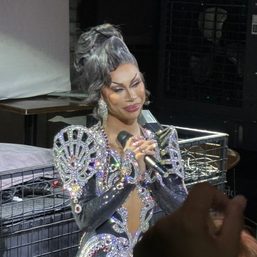
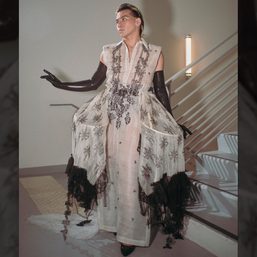
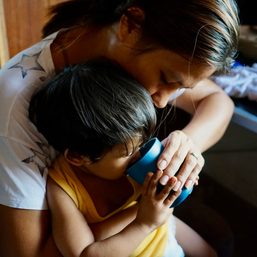



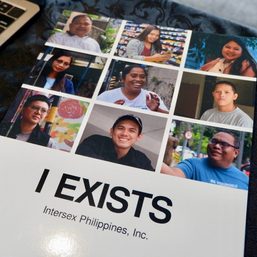

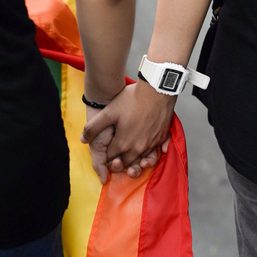
![[Dash of SAS] Pride, rainbow capitalism, and the resistance](https://www.rappler.com/tachyon/2023/07/Pride-and-Rainbow-Capitalism.jpg?resize=257%2C257&crop=300px%2C0px%2C720px%2C720px)




There are no comments yet. Add your comment to start the conversation.